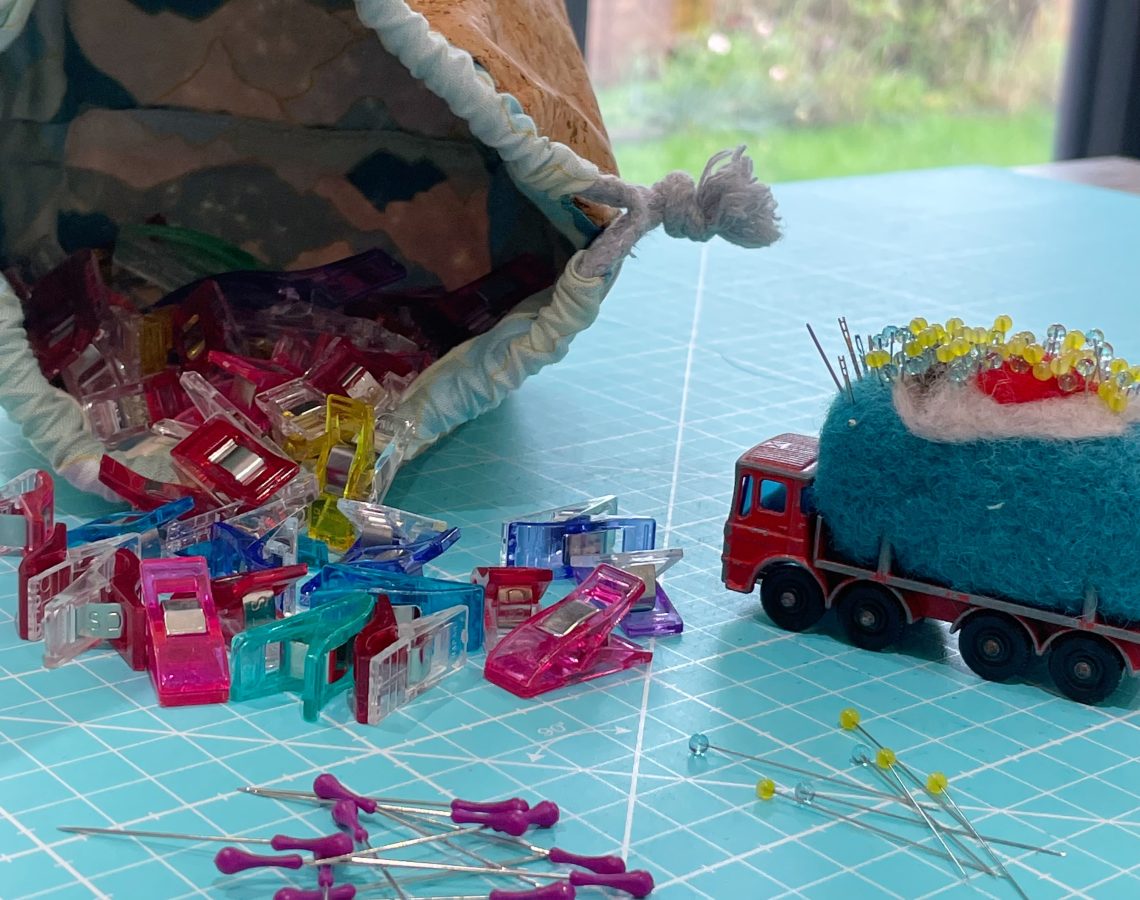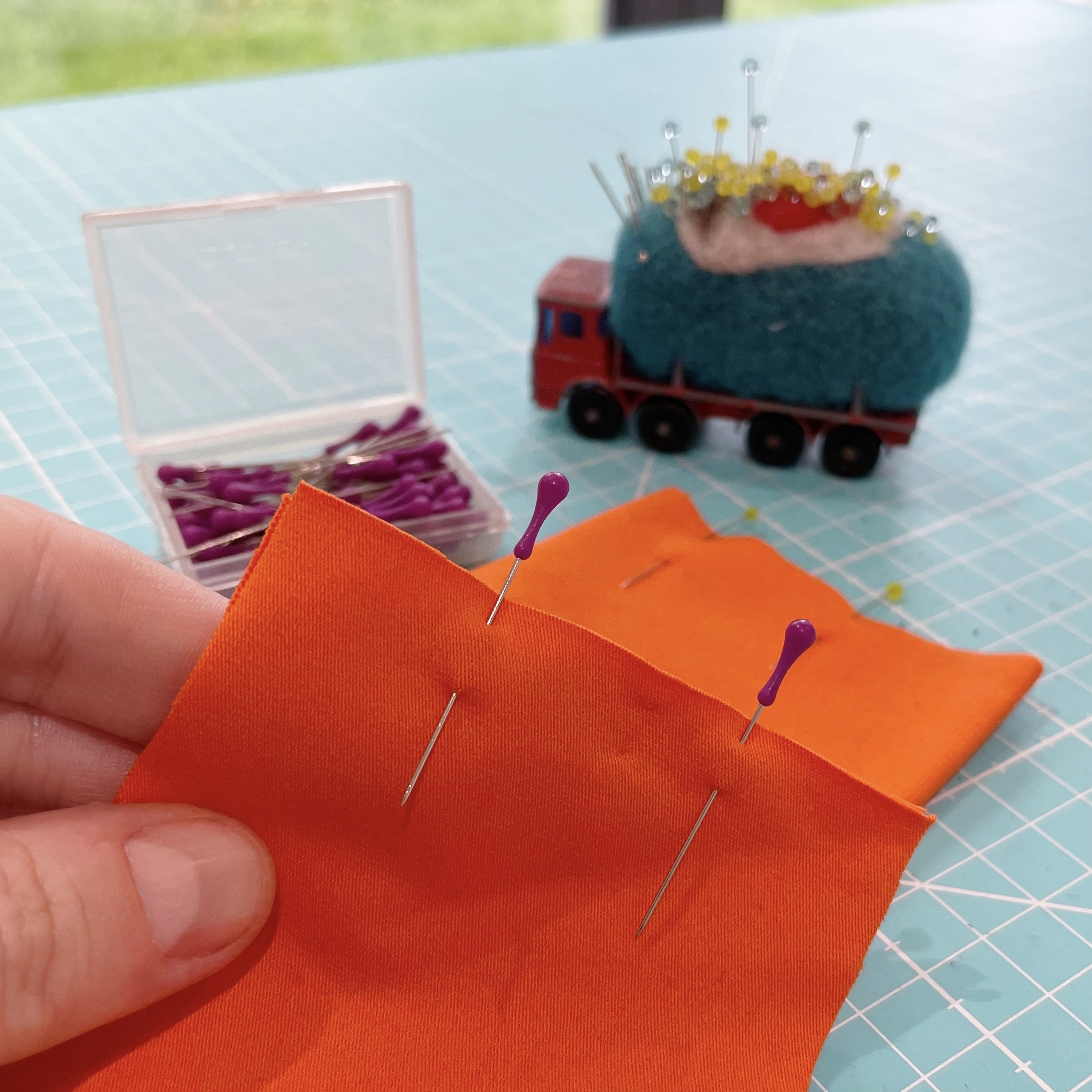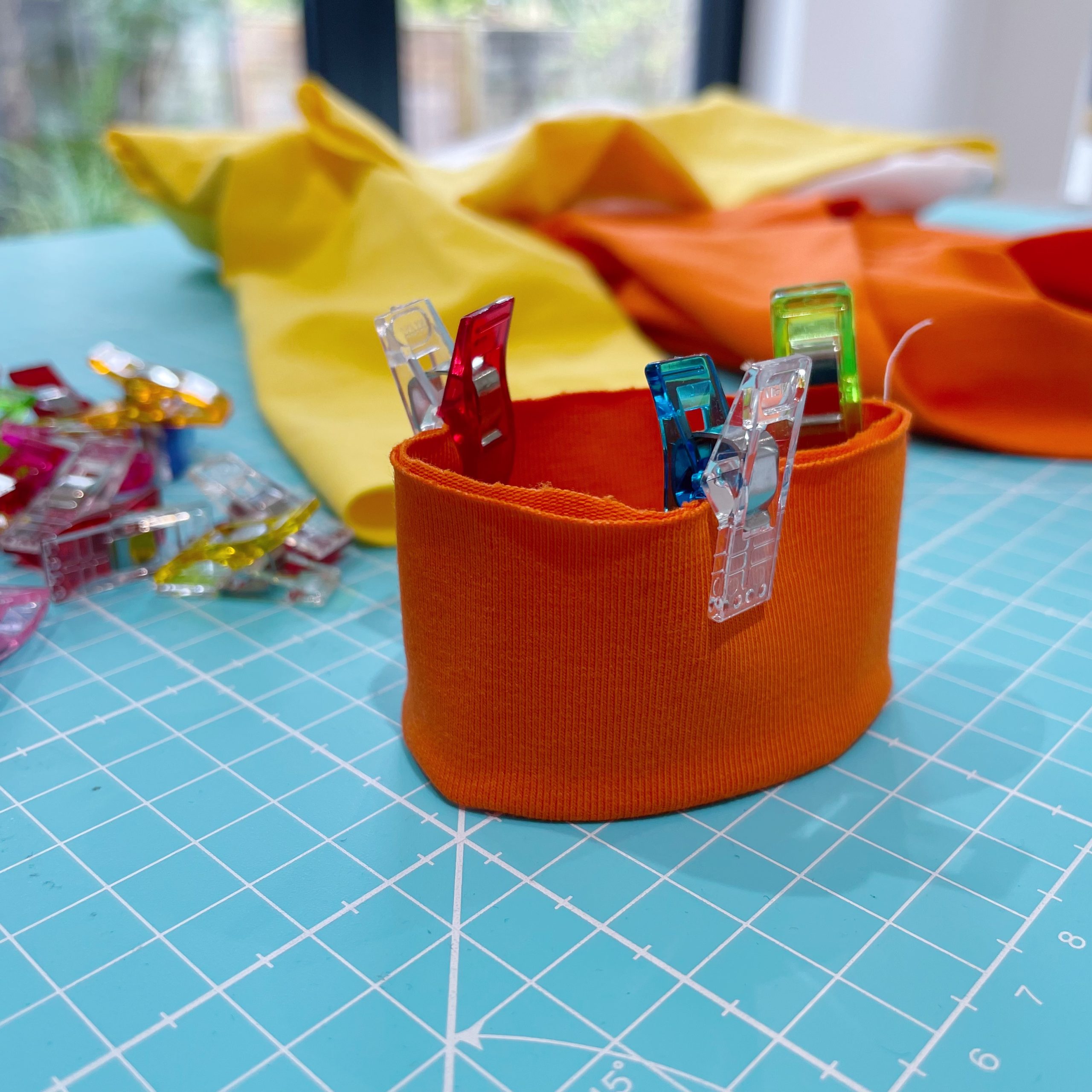This or That? Pins and Clips Edition.

There can be so many decisions that need making when you are sewing garments. Sometimes having a choice simplified can be a real time (and brain!) saver. The Waves and Wild blog will start to add a series of This or That posts to help with some of these “when should I be choosing one tool over another” or “how to a decide on the right fabric for a pattern” type questions. If you have any ideas for future This or That posts, please comment below and we’ll try to add them to the list.
The first This or That compares using sewing clips and pins. What are the pros and cons to both of these sewing tools? When should you choose one over the other? Are there any alternatives? Read on to find out more…
Pins Vs Clips

Pins
Pins are great because they:
- can be very inexpensive (although do also vary in quality)
- don’t move when fabric is stretched
- hold fabric in a precise position; this is especially useful for sewing features like darts
- are very light so don’t weight down fabric; fabric with too much weight on it can stretch or drag during sewing which can cause uneven stitches and a mis-shaped garment
- come in difference thicknesses and lengths so you can choose ones most suited to your project or fabric
Pins can cause problems because:
- being so small, it is quite easy to accidentally send a pin right through the blade of an overlocker/serger; this will bend or break the pin which may cause a broken piece of pin to go flying and could damage the overlocker/serger blade meaning it won’t trim properly and might need replacing
- some pins can be ironed and some can’t…don’t get them confused; technically all pins can be ironed but your pin and your iron won’t thank you for ironing over a non-heatproof pin!
- they can’t be used on fabrics that don’t like having tiny holes in them, like waterproof fabric, or fabric that tiny holes can’t be rubbed out of, like leather
- you can stab yourself

Clips
Clips are great because they:
- are really good at holding fabric flat…perfect for that annoying jersey edge that keeps rolling up
- must be removed before they get close to the sewing machine foot and needle or the overlocker/serger blade; they are simply too bulky to fit through or under anything and this really reduces the chance of accidental damage
- have seam allowances marked on them; many sewing clip brands have lines or grooves on the flat surface that clips onto the fabric which shows 5mm (3/16th”), 6mm (1/4″) and 9.5mm (3/8″) seam allowances
- hold thicker fabric, or multiple layers of fabric, in a more even way than pins
Clips can cause problems because:
- you can’t iron over them; they are far too bulky and would probably melt!
- they can be quite expensive, especially if you want to have a good number of them (I’d recommend a minimum of 20)
- the bulk can add too much weight to fabric which can cause the fabric to stretch accidentally and the bulk of the clip can catch on your table or sewing machine edge
How to choose which to use
As with so many sewing tools, choosing one type over another is often down to personal preference and the same can largely be said about pins and clips. However, there are a handful of occasions when one is definitely a better choice over the other…
Pins are better for patterns (or the aspect of a pattern) that needs a specific place marking. For example, when matching the notch at the centre of a sleeve’s top edge to the garment’s shoulder. Or for marking and holding in place features such as darts, like in the High Tide Trousers pattern.
Pins are also a good choice for sewing elastic into a garment, especially when the elastic needs to be stretched during sewing (like in the Too Wild Dress pattern) because pins will hold the elastic exactly in place whereas elastic can slip through clips when it is put under the pressure of being stretched.
Clips are easier to use when sewing thick layers, or many layers, of fabric. They can hold a lot more without the line of the fabric becoming distorted. This makes a clips a great choice for patterns like the Fireside Slippers. As well as thick fabric, very fluffy fabric is better combined with clips. It can be easy to lose sight of pins in the pile of fabrics like faux fur and sherpa fleece; not being able to find your pin could lead to it being sewn over, ironed over or, worst of all, left in the garment!
And on the opposite side of the scale, very fine fabric like tulle suits sewing clips because pins tend to simply slip out.
Alternatives to sewing clips
Pins don’t really have any safe substitutes but there are a few “household” alternative to sewing clips if you don’t have any to hand or don’t want to add them to your sewing tools stash. Essentially you want something relatively small that can be opened and closed around fabric and will hold it securely but not so tight that it distorts the fabric or is hard to remove. You also want to make sure that no part of your alternative sewing clip will snag fabric. Try items like:
- hair clips; be careful they don’t go under your machine foot or through the overlocker/serger blade as they are much slimmer than sewing clips
- paper clips; make sure the ends don’t snag your fabric
- laundry pegs; these may be heavier than sewing clips so watch out for the drag effect on your fabric

Has anyone discussed the pinch ability of sewing clips? Maybe compared the different brands.? I am an older sewer (70+) and find that I struggle to pinch open the clips, but I really would like to be able to use them.
You forgot that there are times when clips simply won’t work, like when putting on a patch pocket or appliqué. If it’s not on the edge of the fabric, clips are useless. However, wash away double sided tape works well!